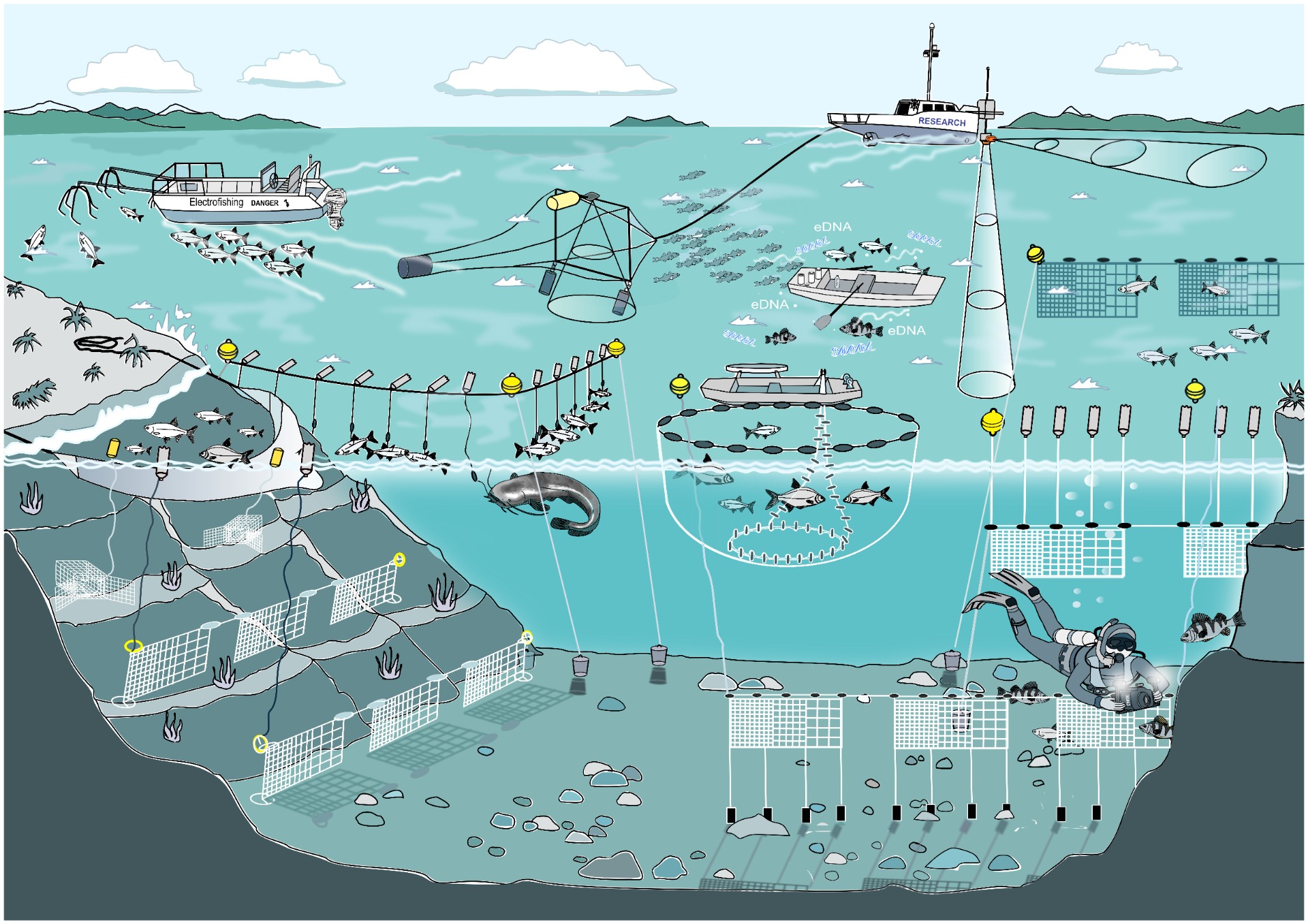FISH ECOLOGY UNIT
OF THE DEPARTMENT OF FISH AND ZOOPLANKTON ECOLOGY
INSTITUTE OF HYDROBIOLOGY BIOLOGY CENTRE CAS
We are specialists in obtaining quantitative, semi- quantitative and qualitative information on the abundance, biomass and composition of fish communities of large inland waters.
As a basic sampling tool for qualitative and semiquantitative fish surveys, we use multi-mesh gillnets that we install in depth stratified design into all types of benthic and pelagic habitats. In addition to standardized nets with twelve mesh sizes in the range of 5 to 55 mm (net height 1.5 or 3 m, length 30 m), we also use large-mesh gillnets with mesh sizes of 70 to 135 mm (net height 1.5 or 3 m, length 40 m). In unstructured littoral habitats (the shallowest benthic habitats), we use beach seines for quantitative surveys (various mesh sizes, 10 to 200 m seine lengths). In structured littoral habitats, we apply electrofishing, when back-pack battery electroshocking devices we use for operation in smaller waters, and two special 6 m long electrofishing boats equipped with a powerful electroshocking device (output voltage up to 600 V) we use for surveying deep-waters of reservoirs and lakes. For quantitative surveys of pelagic habitats, we use trawl nets (several types of frame and frameless trawls up to 10 m height, up to 40 m width, including electrified ones) towed by one or two trawlers (Ota Oliva - length 8 m, engine power 64 HP, Thor Heyerdahl - length 10 m, engine power 115 HP). We also apply purse seines (various types, height up to 12 m, length up to 120 m) distributed from a special catamaran ship. In addition, we own a unique collection of ichthyoplanktonic and fry trawls and beach seines to sample young of the year fish in open water, near the flat bottom and in macrophytes.

FishEcU's equipmental portfolio
Our hydroacoustic team has many years of experience with both acoustic estimates of abundance, biomass and fish stock composition, as well as with surveying fish spatio-temporal distribution and behavior in large water bodies (mobile and stationary hydroacoustics applying both vertical and horizontal beaming). In addition to fish and other aquatic animals, we also have experience with estimating ebullition of greenhouse gases and sediment composition and thickness. We use Simrad EK60 and wideband EK80 echosounders operating at central frequencies of 38, 120, 200 and 333 kHz (supporting chirp and continuous wave of pulse forms) and dual-frequency identification sonar (DIDSON).
Furthermore, we use acoustic telemetry to track fish behavior and distribution. In this case the transmitter is placed on or in a fish and its movement is recorded using a receiver system. We use Lotek Wireless Inc. system, owning 91 WHS3250 receivers operating at 76 kHz. For monitoring the environmental background, we use HOBO Pendant® temperature and light dataloggers and a mobile weather station. We also use OregonRFID passive telemetry equipment to monitor the migrations of aquatic animals. The system is suitable for monitoring the movement of fish and other organisms in smaller streams and reservoirs, in particular, it is often used to verify functionality of fish passages and for monitoring reproductive migrations. For direct visual underwater observations, we use remotely-operated cameras (Subsea Tech Observer, SplashCam Delta Vision HD), a self-operating camera systems (GoPro) and SCUBA divers.
We are also intensively engaged in the role of fish in the food webs of aquatic ecosystems. Here we use both, the bottom-up (food availability for fish under different conditions) and top-down (fish as predators on lower trophic levels) approaches and consequently individual (food selectivity) as well as the community-based approaches (bioenergetic modeling, food racions) are applied. Recently, in addition to generally used direct analyses of digestive tract contents, we also perform analyses based on the evaluation of stable carbon and nitrogen isotopes in various fish tissues. We are well equipped with all the instrumentation for the above mentioned analyses.
